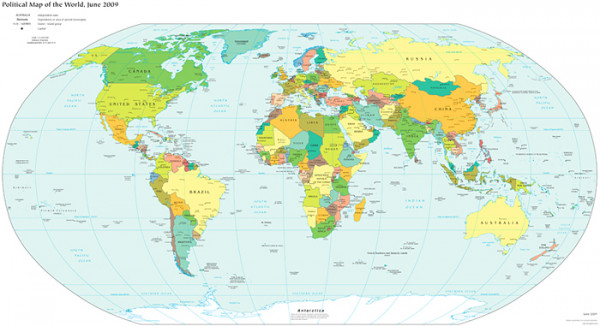Philippines
Overview
| Flag |
|
| Anthem |
Lupang Hinirang (Chosen Land)
Watch on youtube (with lyrics in video description)
|
| Capital |
Manila |
| Largest city |
Quezon City |
| Official language(s) |
Filipino / English |
Demonyma name for a resident of a locality, often the same as the name of the people's native language
|
Filipino/Filipina (feminine) |
| Government |
Unitary presidential constitutional republic |
| Area |
299,764 km2, 115,831 sq mi |
| Population |
~ 92 million |
| Currency |
Peso |
| Internet TLD |
.ph |
Geography
The Philippines is an
archipelagoa group of islands comprising 7,107 islands. The country is located in Southeast Asia in the western Pacific Ocean. To its north across the Luzon Strait lies Taiwan. West across the South China Sea sits Vietnam. To the south the Celebes Sea separates the Philippines from other islands of Indonesia. The Philippine Sea lies east of the country.
The capital city of the Philippines is Manila with a population of 1,660,714. It is the eleventh most
populoushaving more people, as a relative comparison of regions metropolitan areaan area of population usually with a central or core city and surrounding towns or suburbs in the world. The Greater Manila Area has a population of around 20 million. Still, the city of Manila is only the second largest city in the country. Its largest city is Quezon City. It has an estimated population of 2,679,450 people.
Society and culture
Philippine culture is a combination of Eastern and Western cultures. There are elements of the Asian culture, but also Spanish and American influences.
Population
By 2009, the Philippines became the world's 12th most populous nation with a population of over 92 million. It is estimated that half of the population
residesto live on the island of Luzon. The population's
mediana numeric value separating the higher half of a sample from the lower half age is 22.7 years. Filipinos generally belong to several Asian ethnic groups, for example to the Tagalog, the Cebuano, the Ilocano and the Hiligaynon Ilongg. There are also
indigenousnative to an area peoples like the Igorot, the Lumad and the Mangyan.
Languages
There are 171 individual languages in the Philippines. According to the constitution, Filipino and English are the official languages. Both languages are used in government, education, print, broadcast media and business.
Religion
More than 90% of the population are Christians. About 80% belong to the Roman Catholic Church while 10% belong to other Christian
denominationsa group sharing particular religious beliefs. Between 5% and 10% of the population are Muslim. Philippine traditional religions are still practised by many
aboriginalnative to a place and tribal groups.
Government and politics
The Philippines is a
constitutionalconfirming to the system of primary principles and laws that regulates a government republic. The President functions as both head of state and head of government. The
currentexisting at the moment president is Benigno S. Aquino III. He is also the commander-in-chief of the
armed forcesthe military forces of a nation, such as the army, navy, air force and marines. The
bicameralhaving two separate legislative chambers Congress is composed of the Senate, serving as the upper house, and the House of Representatives, serving as the lower house. The
judicialresponsible for maintaining the courts of law and for the administration of justice power is
vestedsettled; fixed in the Supreme Court.
Economy
The Philippine economy has changed from one based on agriculture to one based on services and manufacturing. Primary exports include electronic products, transport equipment, petroleum products, coconut oil, fruits and others. Major
tradingthe commercial buying and selling of goods and services partners include China, Japan, the United States, Singapore, Hong Kong and some more. The
unemploymentthe state of having no job rate stood at around 7.6% in July 2009.







